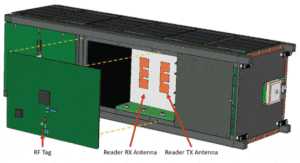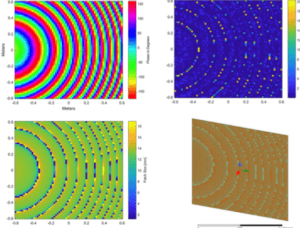![]() The BBC is running a series on “50 Things That Made the Modern Economy“, with an entire special on RFID technology. This episode is available as an article and a podcast. Thank you, Pavel Nikitin, for sending this our way.
The BBC is running a series on “50 Things That Made the Modern Economy“, with an entire special on RFID technology. This episode is available as an article and a podcast. Thank you, Pavel Nikitin, for sending this our way.
Research in the Design of Transparent RF Circuits
 Design and Characterization of Meshed Microstrip Transmission Lines
Design and Characterization of Meshed Microstrip Transmission Lines
Zachary J. Silva ; Christopher R. Valenta ; Gregory D. Durgin
2019 IEEE MTT-S International Microwave Symposium (IMS) Year: 2019
Advancements in manufacturing techniques have enabled the ability to create micro-mesh conductive structures which have applications in a variety of electrical engineering technologies. This paper presents the theoretical analysis verified with simulated results and laboratory measurements of a 2.4 GHz micro-mesh transmission line over a solid ground plane. As expected, the reduction in conductive area results in a decrease in capacitance per unit length, and the mesh structure results in an increase in inductance per unit length leading to an overall increase in characteristic impedance and increase in electrical length. Results show that the mesh implementation to reduce the conductive material to 16% on a microstrip transmission line using FR-4 must get 44% wider than its solid metal counterpart to maintain 50 Ω impedance. Length must be similarly increased by a factor of 4% to maintain the same electrical length.
Journal Article on the Reader Used in RFTsat

Low-Power and Compact Frequency Hopping RFID Reader at 5.8 GHz for Sensing Applications in Space
Cheng Qi ; Robert W. Corless ; Joshua D. Griffin ; Gregory D. Durgin
IEEE Journal of Radio Frequency Identification
Year: 2019 | Volume: 3, Issue: 3
Radio frequency identification (RFID) is the driving technology behind many compelling applications, such as Internet-of-Things, smart cities, and inventory tracking. However, it is always challenging to make a small, low-cost transceiver with little power consumption. This paper presents the design and characterization of a low-power, compact frequency hopping RFID reader that has great potential for use in space-based sensing applications including structural health monitoring, tracking inventory, and sensitive field measurements. This RFID reader will be launched into low-earth orbit aboard the radio frequency tag satellite (RFTSat), a nanosatellite developed at Northwest Nazarene University, and serves as a demonstration of backscatter communications in space. This reader is capable of operating in the 5725–5850 MHz frequency industrial scientific medical band with up to 31 dBm equivalent isotropically radiated power (EIRP) and −58 dBm to −82 dBm sensitivity in different conditions.
Backer’s MS Thesis Available Online
Holographic Transmit Reflect-Array at 5.8 GHz for Wireless Power Transfer in the Fresnel Zone
MS Thesis by Emily Backer
This thesis presents the design and simulation of four square holographic reflectarrays consisting of circular patches for wireless power transfer (WPT) in the Fresnel region. The design includes the calculation of the phase reflection response from different variations of patches and substrate sizes, the calculation of the phase front needed to form a focal point, the simulation of a reference wave, the design of the hologram, and the simulation of the final holographic system. The first set of arrays use FR4 substrate and are made up of 4096, 2304, and 576 number of patch segments arranged in a rectilinear grid, and the last array uses a Rogers substrate and is made up of 4096 patches. These 1.216-meter FR4, 0.912-meter FR4, 0.456-meter FR4, and 1.216-meter Rogers holographic reflectarrays successfully collimate the incoming power into beams at 10-meter, 5-meter, 3-meter, and 10-meter focal points respectively.
- « Previous Page
- 1
- …
- 6
- 7
- 8
- 9
- 10
- …
- 71
- Next Page »
